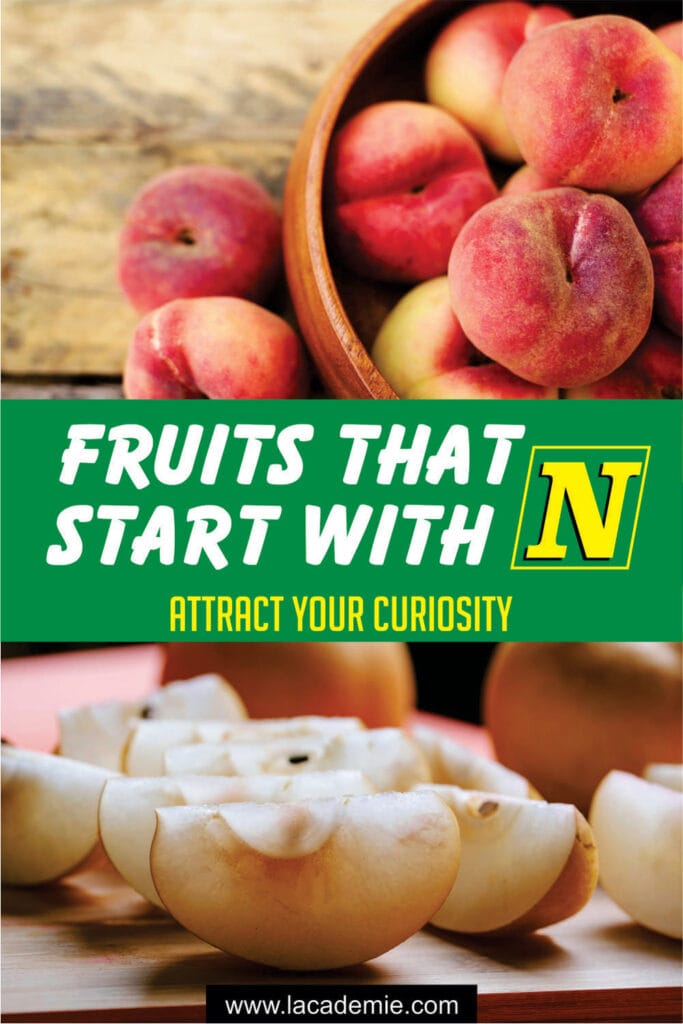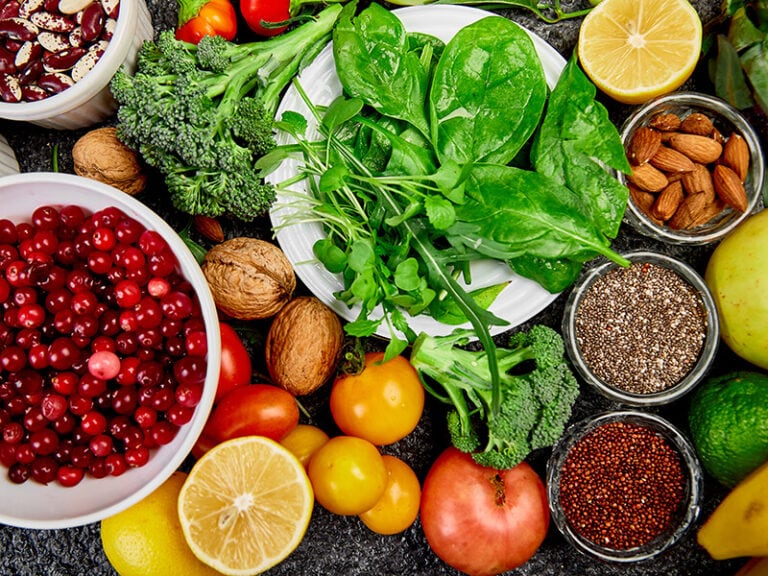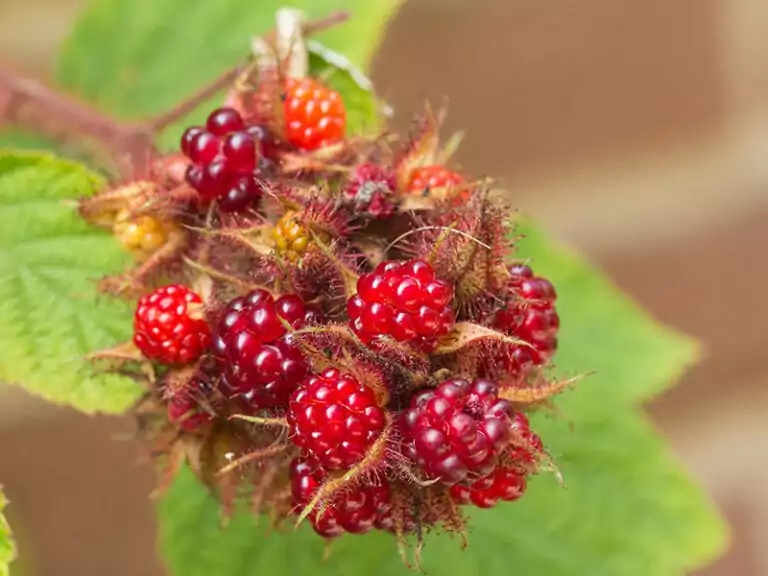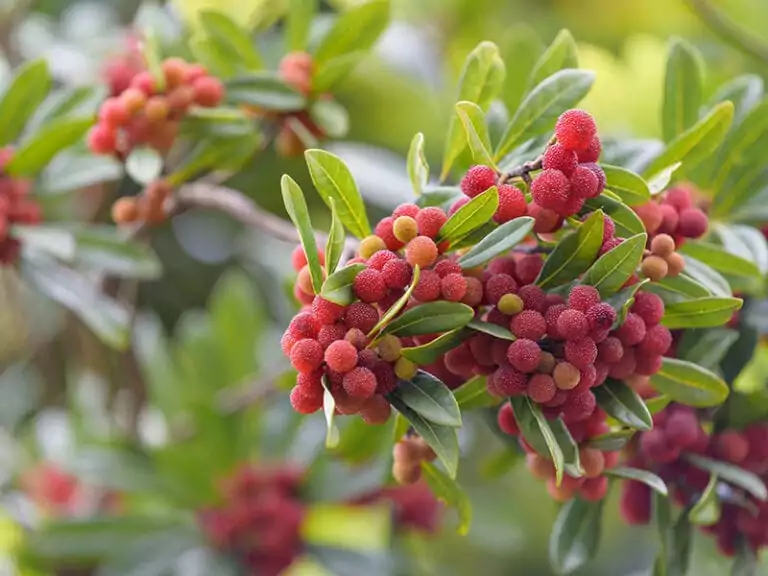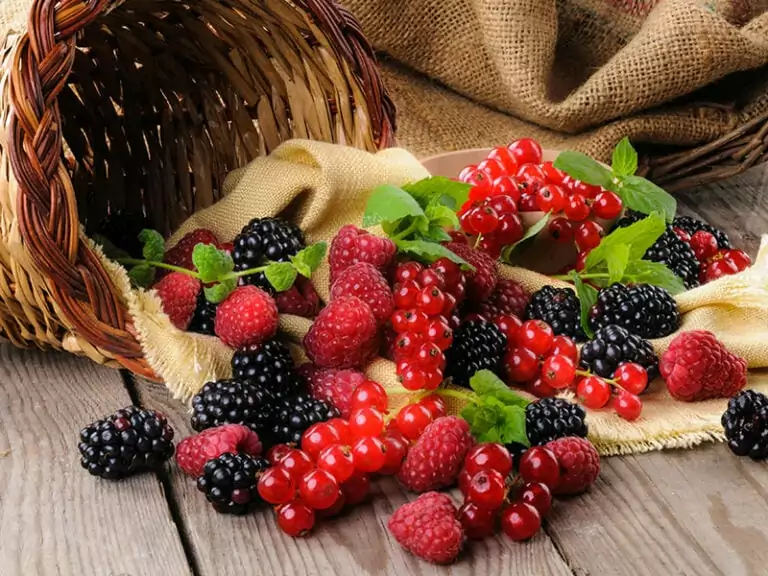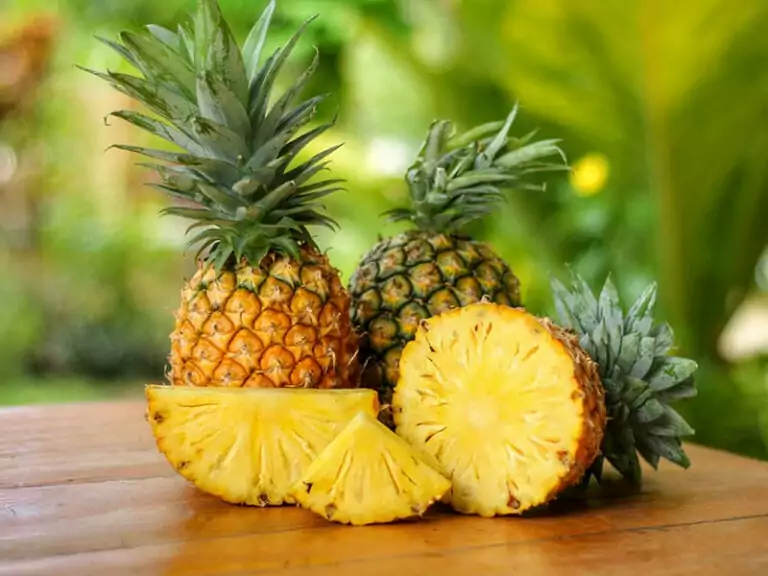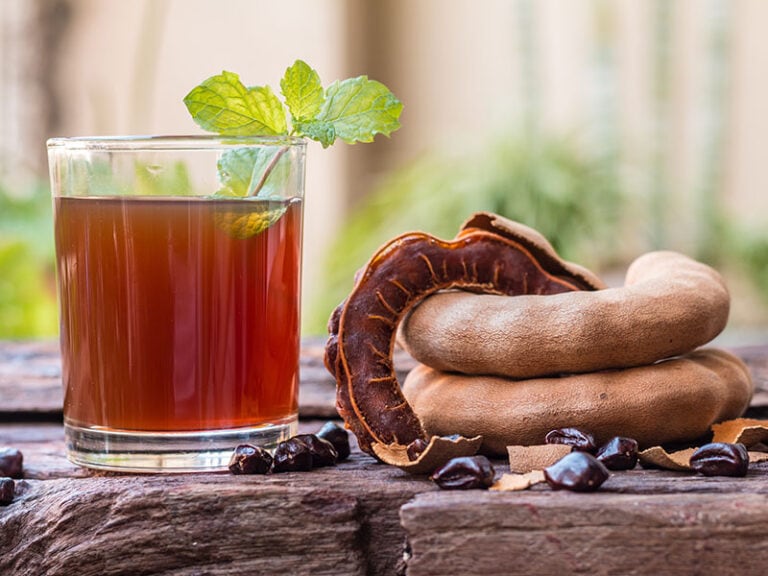Let’s name one of these fruits that start with N first! Have you ever heard of Neem fruit? Not yet? This is a good fruit for the intestine, but I will present it in detail later.
The most important thing I want to mention here is that there are many N-something fruits that you may not be aware of. Keep discovering them in this article below!
In the following article, I will refer to 20 fruits whose names begin with the letter N. They are divided into 5 types of fruits, and I will add some of their characteristics, nutrition facts, and tastes. These pieces of information are so interesting that you will say “Wow”. Get it now!
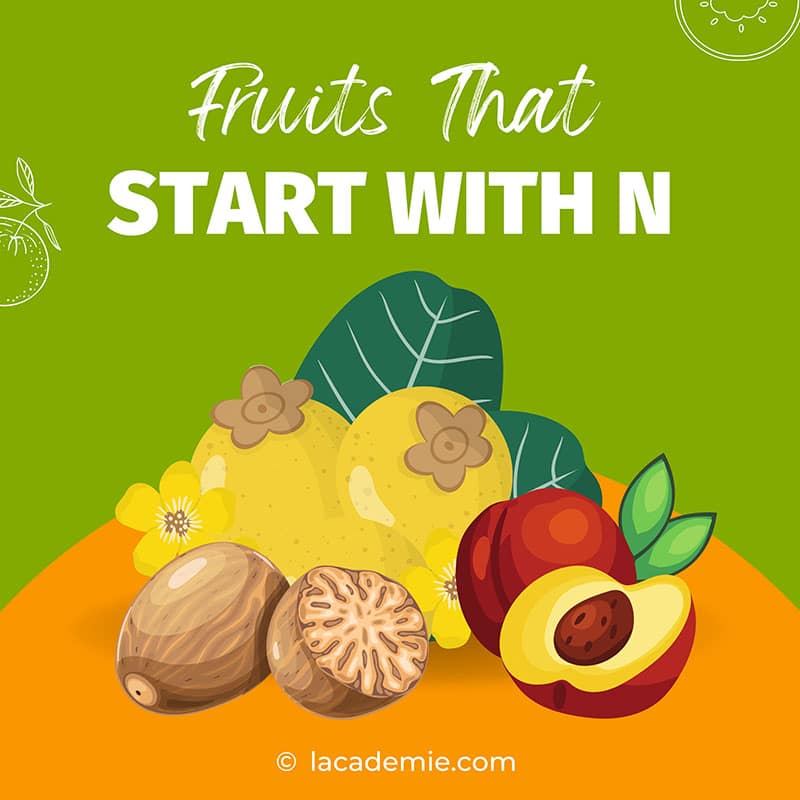
7 Stone Fruits That Start With N
There are many types of stone fruit whose names begin with the letter N. You may hear some quite familiar names, but some might be the first time you know. Let’s dive in!
1. Nectarines
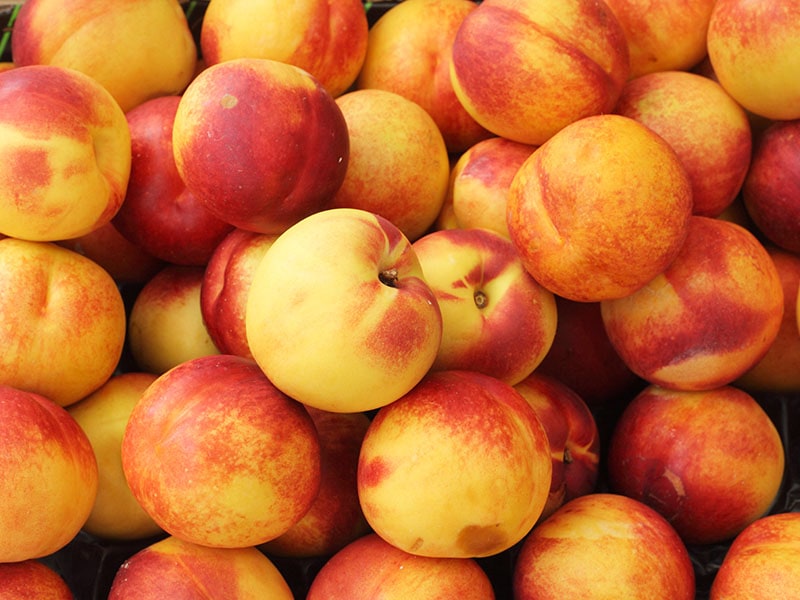
Nectarine, known as Prunus Persica in science, is an edible fruit type of peach. It has flat and non-fuzzy skin compared to peaches. When you smell a piece of Nectarine, you will find it has the same scent as the normal peach. It tastes somewhat sweeter than peach.
You can eat raw Nectarine without cutting the peeling. Syrup, jams for bread, and jelly using the fruit flesh are also delightsome cuisines. You can even meet this N-something fruit in some smoothie or fruit juice recipes.
Nectarine is a rich source of beta-carotene, vitamin C, fiber, and lutein. These nutrients bring great benefits for digestion and people who have high blood pressure, heart disease, or diabetes. It should be a good choice for your daily fruit!
This rose-shaped Nectarine dish will satisfy both your eyes and mouth!
2. Nepali Hog Plum
Nepali Hog Plum grows commonly in Nepal. Products made from it are quite popular in the market today. The fresh Nepali Hog Plum has a small oval shape. It is green and turns yellow when ripe. Its taste is very sour, even when it is fully ripe.
Nepali Hog Plum has a high vitamin C level, making your mouth water just by seeing or hearing about them. You can make many different unique dishes with this N-something Hog Plum. It could be seasoning for the sour dishes or green salads.
Nepali Hog Plum sweet nuggets are so delicious. Locally, people mix the pulp with sugar, salt, pepper powder, cardamom powder, and some other additives to make an amazing taste.
Moreover, you also can try Nepali Hog Plum leather – a kind of spice-dried pulp with sugar powder outside. Nepali Hog Plum rolls with slowly dried slices and chewy texture are also worth eating.
3. Nectacot
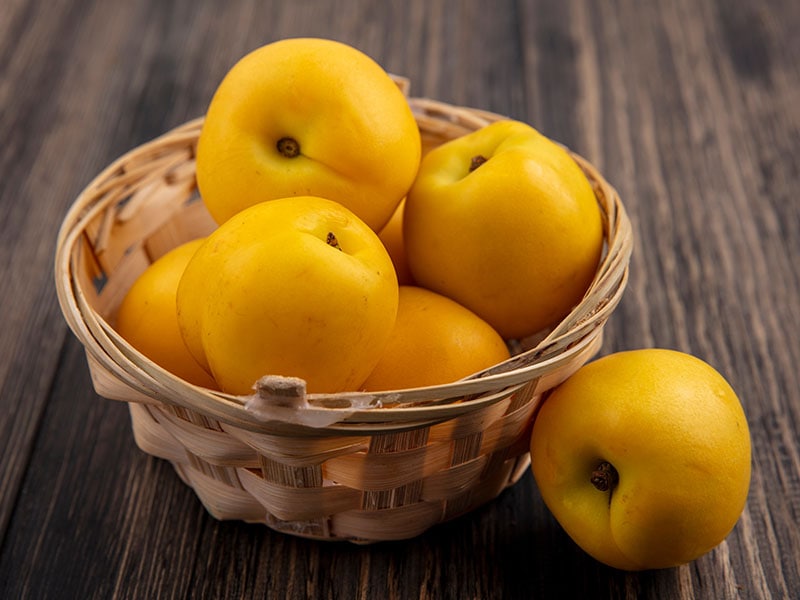
Nectacot is a fruit that starts with the letter N and looks familiar to many people. It is originally from Florida, but nowadays, you hardly find it in the United States to buy. It grows widely in South Africa now.
Regarding appearance, the Nectacot doesn’t look too different from other fruits of the rose family, like peach, apricot, or Nectarines. Its pulp is yellow and has thirst-quenching sweetness. Nectacot is as small as an apricot. It also has smooth skin.
Nectacot contains many vitamins, so it is very good for your health. One of the most common ways of enjoying Nectacot is eating it raw. Its natural flavor is still the best to feel.
4. Nonda Plum
Nonda Plum has a common name as Parinari Nonda. It is a popular plant grown in Northern Australia and New Guinea. This is a sparse sub-canopy tree with many clusters of small fruits.
This tree has a certain dependence on the environment. For example, in different terrain conditions, it will grow differently. Normally, the Nonda Plum tree is 19 – 49 feet tall, which is a small to medium size. While in a suitable environment and climate, the tree can grow up to 111 feet tall.
Nonda Plum is shaped like an egg. The fruit pod is yellow-brown with dark brown spots. It also has soft hair outside. The pulp is soft and spongy.
In terms of taste, it seems like an apple, but it is softer and a bit drier. It has a mild taste, and it is not a common fruit that people often eat in daily meals.
5. Nance Fruit
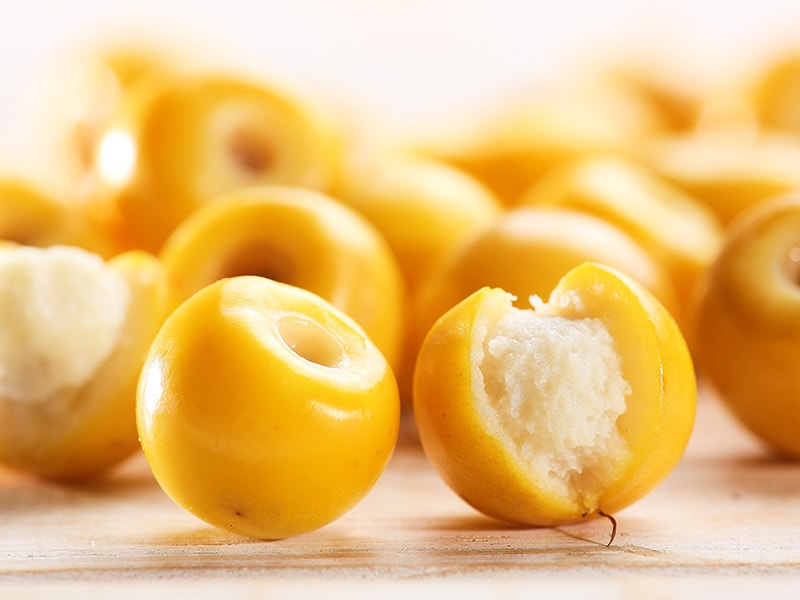
At first glance, you may notice that Nance looks like a cherry but has a yellow or orange color. It is a small kind of tropical fruit (less than 1-inch) from the Byrsonima crassifolia tree. This plant is abundant in the Caribbean, Central, and Latin America. It’s a prevalent fruit in Guatemala.
However, there is also a rare red Nance fruit called Malpighia Mexicana. It grows in some regions of Mexico and Costa Rica.
Nance has a white pulp containing rich oil. It has a sweet, cheese-like flavor. But when it ripes, it smells like a mixture of sweet banana, slightly sour lychee, and a little taste of pear. It’s a bit hard to imagine! This is a stone fruit containing an inedible seed inside.
Nance is rich in vitamins A, C, K, E, fiber, and other supplements, enhancing a healthy digestive system, boosting skin health, and decreasing cardiovascular disease risk. You can enjoy it raw, make juice or mix it with other fruits and vegetables in desserts.
If you can’t imagine Nance’s special taste, discover it one more time through this introduction!
6. Nutmeg
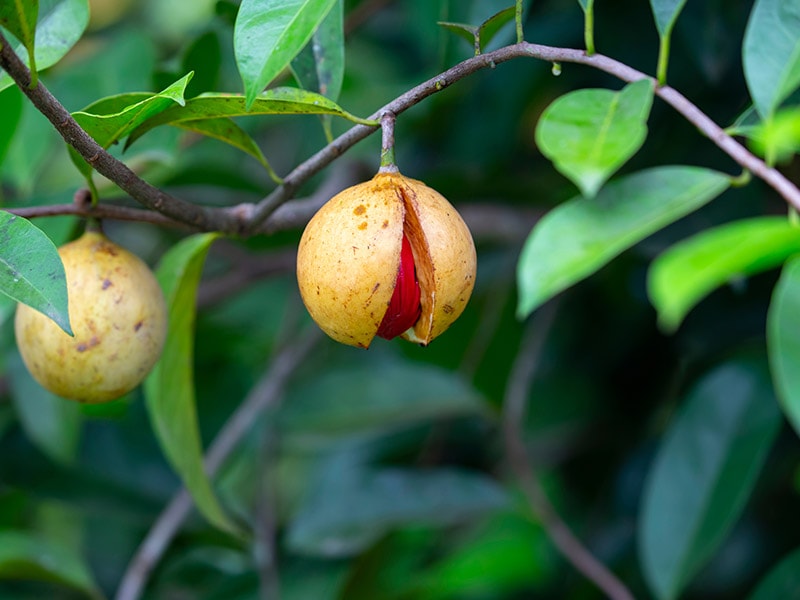
Nutmeg is a spice used in cooking to boost food’s flavor. The tree produces fruits twice a year, around May – June and November – December. It is the native fruit of the Pacific island region, South Asia and Southeast Asia.
Usually, the Nutmeg that you see is in powder form. To make this product, people will get the red stone inside after peeling its flesh. The stone undergoes many stages to produce Nutmeg seeds. Then, the seeds are dried and ground into powder.
People often use Nutmeg pulp to make sweets, or especially in Indonesia, they make a dessert from it, called manisan pala. Nutmeg rind can be blended or boiled to make juice. Nutmeg powder is famous as a spice in sausages, stews, soups, porridge, and curries.
Nutmeg includes many vitamins and minerals, such as magnesium, phosphorus, iron, zinc,… which have therapeutic effects. It also helps relieve stress and pain, purify the body, and cure insomnia.
7. Natal Plum
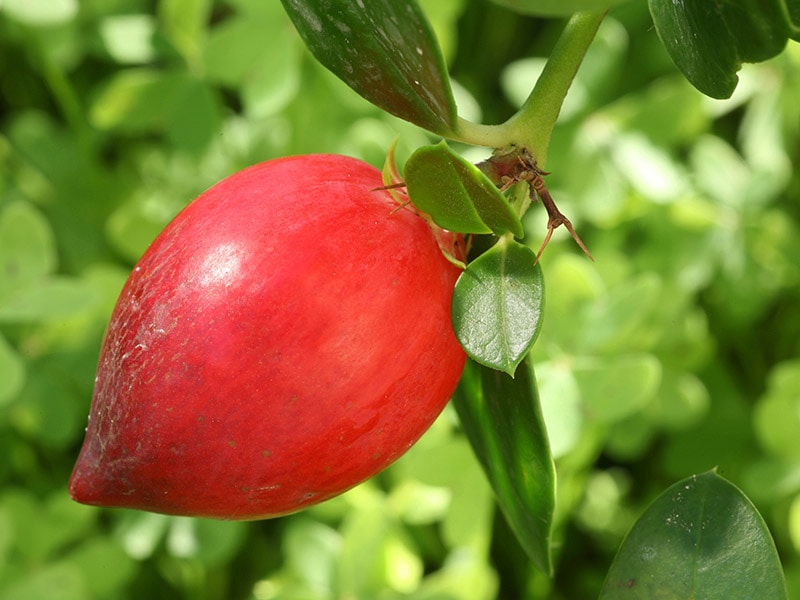
Natal plum originally comes from Natal, South Africa, and has the native name Num-Num. In many areas, people use it as a hedge plant because of the thick level of leaves and hard thorns.
Natal plum has a round shape with a tapered point. It has a bright red pod and flesh. The special thing is that the fruit of the Natal plum tree is the only part you can eat. Its trunks and leaves are very poisonous and inedible.
Natal fruit has a sweet and sour flavor blending when ripe. The taste of the plum is as sour as the taste of cranberries. This fruit contains vitamins C, thiamine, riboflavin, and some minerals, such as calcium, iron, and magnesium.
You could eat Natal plum raw or slice it to add to salads. Besides, it is suitable to make jams, go well with Indian herbs and spices, and gives sauces or soups a good taste.
3 Pome Fruits With N As A Starter
In addition to the stone fruits, I will add more to your list with 3 pome fruits with N at the beginning of their names. They are even famous and quality fruits on the market.
8. Northern Spy Apple
Northern Spy apple developed widely in the northeastern United States and on a few farms on the west coast. It is harvested in late October or early November. In cool and dry conditions, this apple can last for up to three months.
The distinguishing feature of this special apple variety from the other apples is its imperial red skin with light yellow and green strikes at the fruit’s head. At first bite, you will find it slightly sour, but the more you chew it, the sweeter you get.
Northern Spy apple has many nutritional benefits. It contains fiber, especially pectin, which helps to reduce the cholesterol level in the blood. People with diabetes should consume this apple because it is good for glucose metabolism in the body.
Northern Spy apple is famously found in ciders. However, you can eat it raw or use it in many dishes, from grilling, roasting, and frying to slow-cooking or making soup. Baked goods, tarts, or cobblers are also delicious with the apple.
9. Newton Pippin Apple
Newton Pippin is an apple dating back to the 18th century. This is one of the oldest apples originating in the United States. Another name for this apple is Albemarle Pippin.
First, the Newton Pippin apple is famous for its strong fragrance. Its season is late at the end of October because it needs a hot summer and fall to be ripe and give exact flavor.
The second is that the Newton Pippin apple will reach the yummiest taste when you store it one or two months before consuming it.
The third is that Newton Pippin has two types: green and yellow ones. However, it is hard to see the one-colored apple, and it is more common with mixed colors. More or less yellow or green depends on location and sunlight intensity.
Known as a high-quality and nutritious apple for cooking, many dish recipes, fruit juices, or hard apple cider call for Newton Pippin apple. Even when cooked, the Newton Pippin retains its rich, delicious flavor.
Find more interesting facts about Newton Pippin apple through this video!
10. Nashi Pear
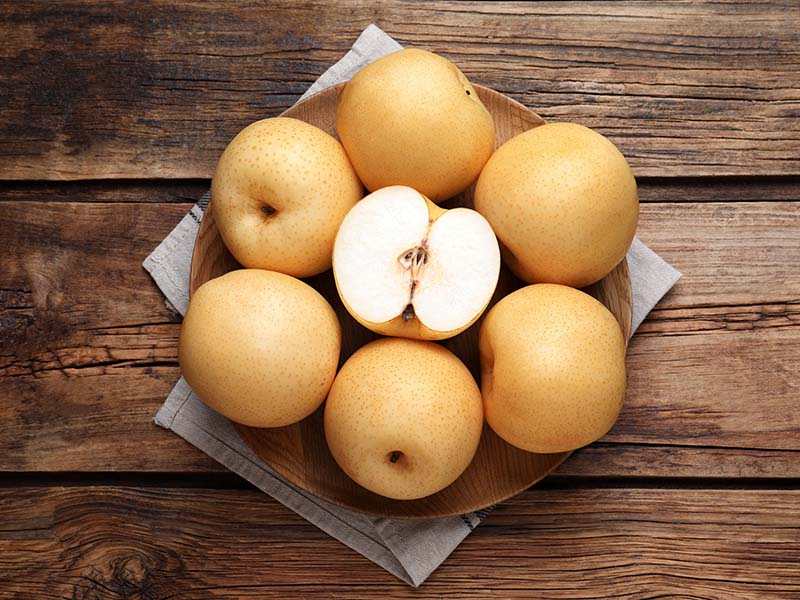
Nashi pear, also known as Asian pear and apple pear, has been a native fruit of Japan and China for over 3000 years. It had been one of the most expensive and premium fruits which only the rich could enjoy.
This pear has an almost apple-like shape. It can be quite large and have a sweet odor. The pulp inside of the fruit is white, crispy, and succulent. As the fruit turns a bold yellow, it loses a crunchy texture.
In a Nashi pear, there is a lot of vitamin C and fiber. You can put it in your smoothie, make a side dish or add it to a soup bowl. It will make your meal healthier and more delightsome.
A tip for choosing the freshest pear is that you can buy it from March to November. In cold and dry conditions, Nashi pear can stay fresh for many weeks or more if you wrap it well.
2 Types Of Citrus Fruit Starting With Letter N
Do you like eating citrus fruit? Now, come with two mouth-watering citrus fruit types beginning with N. They are almost like orange or tangerine and are good fruits for resistance.
11. Nagami Kumquat
Nagami kumquat is native to Asia, and its season begins from late winter to spring. In the United States, it is a highly commercial kumquat type, and 90% of kumquat crops are from California, Florida, and Texas.
The kumquat has a small oval shape. It tastes fresh and slightly sour. Due to the essential oil, the peel seems a little bit spicy. The fruit helps boost collagen production for the skin, fight against oxidants, strengthen the immune system, and reduce inflammation.
The taste of Nagami kumquat is very suitable for making sweet and savory dishes. You can throw it into a salad bowl or use it as a topping on cakes. Cocktails and jams are also good ideas to use this fruit.
This review of picking and trying Nagami kumquat will give you more experience with this fruit!
12. Navel Orange
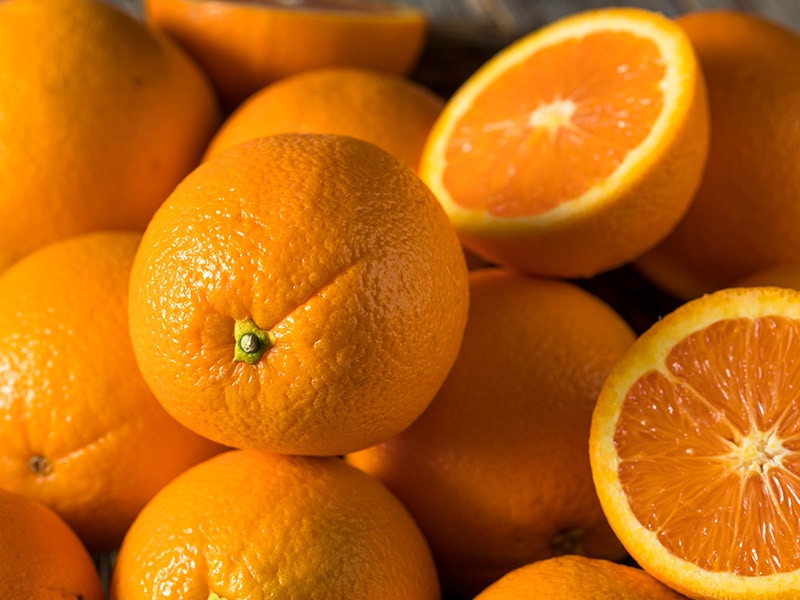
The Navel orange is a seedless winter orange, first discovered in Brazil in the 1800s. This beautiful orange variety’s harvest time is from November to June, and its peak season is in January and February.
The Navel orange is round to slightly oval. Its appearance and peel look not much different from other kinds of orange. This orange is succulent with a sweet, aromatic flavor and a little bit sour with low acidity.
With those characteristics, people often use it in making bottles of orange juice or delicious jams for bread. But if you eat it raw and fresh, it is also an addictive dessert.
A Navel orange usually contains a lot of water, fiber, and low carbs while being negligible in protein and fat. For those on diet, lose weight or care about skincare, this is a great source of nutrition.
4 N-Something Berries Fruits
When thinking about berries with N as a starter, have any names come to your mind? I will let you down when listing some new berries that you may have hardly heard of. Let’s scroll!
13. Nocera (Italian Grape)
Nocera is a high-quality grape species that develops popularly in the famous wine region of Italy – Sicily. Nocera can keep good acidity even under the high temperature and burning sun of this land.
The cluster of Nocera grapes is usually medium-size cylindrical shape with many oval berries, which turn green to purple-black when ripe.
The Nocera grape produces a ruby-red wine with purple hues, bold fragrance, fixed acidity, and tannin. Each drop of Nocera wine contains its exclusive taste of quintessence and high alcohol volume while keeping the natural grape flavor.
People often use Nocera to make wine and cook dishes instead of eating raw. You can use some recipes to combine this wine with foods, such as grilled beef with cheesy polenta, deep-dish pizza, and braised lamb shanks.
14. Neem
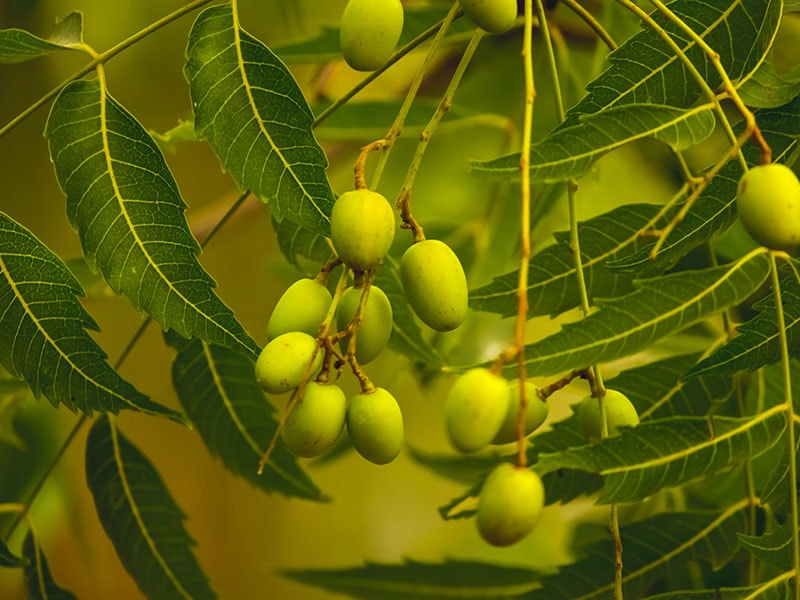
Neem, also known as Indian lilac, is a natural herb. Neem fruit usually grows in small clusters. It has an oval shape and a green peel. Neem is a potent antioxidant with antimicrobial effects and may be useful in counteracting against certain viruses and fungi.
Extract from the seeds of Neem is an ingredient in hair and dental products. Shampoo containing Neem solves the problem of dandruff or head lice. Meanwhile, dental products with Neem (mouthwash, toothpaste, and tooth powder) can relieve toothache and improve oral health.
Neem oil is yellow or brown and has a garlic or sulfur smell. If you accidentally taste it, you will feel a strong bitterness. Neem and its products are safe to use, but in case you may be allergic or sensitive to it, try a little before using it with high volume.
You can gain more knowledge about Neem’s health benefits through this video!
15. Nageia Nagi Fruit
Nageia Nagi Fruit has another familiar name – Asian bayberry. It belongs to the Podocarpaceae family. This plant grows in low hilly areas with an average of 200 meters to 1200 meters. People use its wood to make household items and rarely consume its fruit.
Nageia Nagi is a high-value tree that supplies fine wood for producing furniture because it is easy to manufacture and has a smooth surface. Its trunk is widely used in China and Japan to make wooden household items such as beds, wardrobes, and dining tables,…
In addition, the seed part of this fruit also produces a type of oil that is used in industry and lightning.
Nageia Nagi requires some conditions to grow well, such as the temperature being slightly moderate (around 20°C) and the location having at least 4 months of hot and humid summers. So, this species is hard to grow in Europe, the US, and New Zealand.
16. Nannyberry
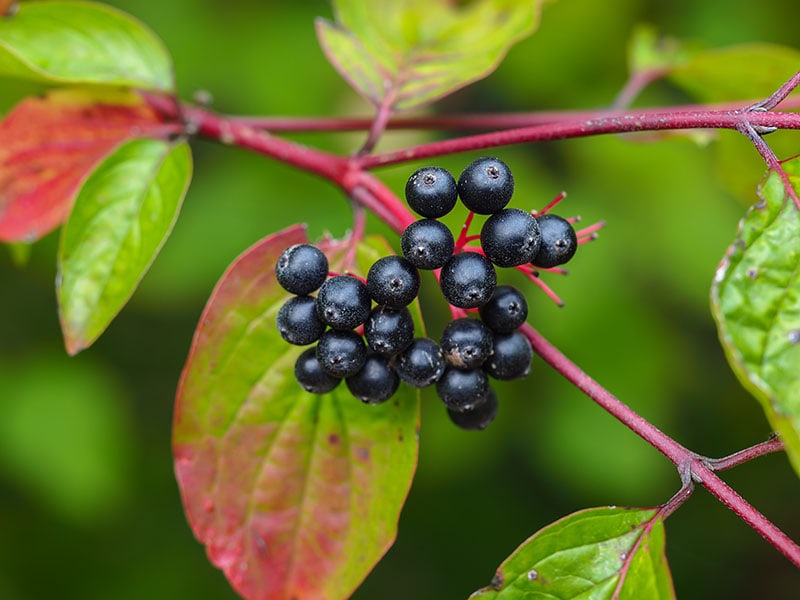
Nannyberry owns many other names such as Viburnum Lentago, Sweet Viburnum, Wild Raisin, and Blackhaw,… It is native to the northeastern and midwestern United States. Some call it “Sheepberry” because its fruit smells like wet fleece when being too mature.
The Nannyberry is a tiny edible fruit, so you can enjoy its juicy and sweet taste when it is ripe, turning red to dark black. This fruit is birds and wildlife’s favorite food. People can also eat raw or use it in some salad and smoothie recipes.
Nannyberry benefits people having measles and menstrual irregularity. It helps to stimulate nerve health and relieve cramps, pain, and anxiety. However, pregnant or breastfeeding women and people with kidney stones should avoid using this fruit.
3 Tropical Fruits With N At The Beginning Of Their Names
Do you know there is a mango whose name starts with the letter N? It is a yummy tropical fruit that you should try once in a lifetime. There are still many N-something tropical fruits in the world you may know or not. So let me tell you with the list below:
17. Naranjilla
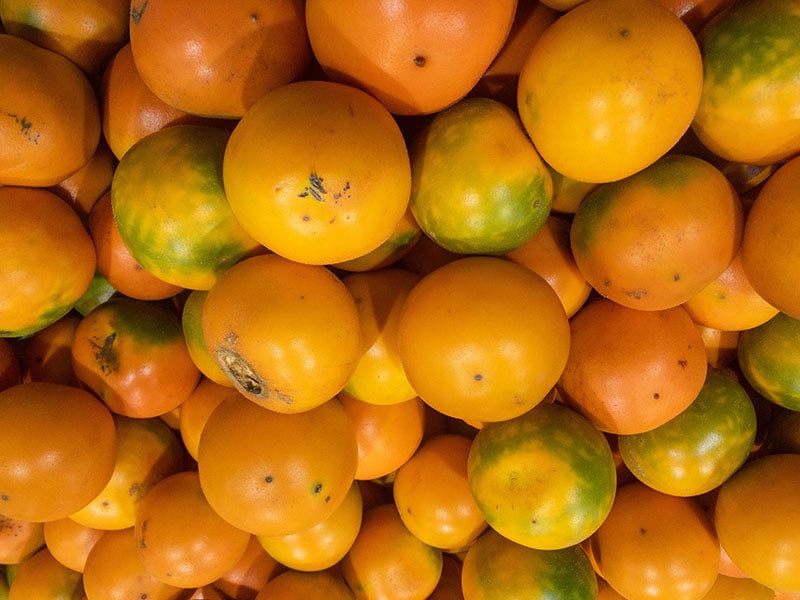
Naranjilla means “Little orange” in English because of its similar shape and color to oranges. However, this unique orange-colored fruit belongs to the family of eggplant and tomato.
This fruit grows a lot in the mountainous regions of Colombia and Ecuador. Then, it rises widely in Peru, Panama, Guatemala, and Costa Rica. From the 17th century, the juice of the Naranjilla fruit became a favorite drink of the Incas.
Naranjilla smells like citrus fruits, but its taste is a combination of sweet pineapple, juicy kiwi, and sour lime. To reduce its sour taste, people often add sugar to the slight foam juice. Many locals also enjoy raw Naranjilla by peeling and eating the flesh inside.
Some other methods to process this fruit are to make wine or apple wine, sauce, and baked bread. Naranjilla benefits people who want to prevent cancer and heart disease, strengthen their bones, and detox the body.
18. Nam Dok Mai Mango
Nam Dok Mai Mango is one of the ultra-famous fruits of Thailand. This type of mango can represent varieties of mango in the world, both in appearance and in taste.
You can eat this mango when it is hard green. But the best flavor you can enjoy is full ripe mango. When it is ripe, the flesh is smooth, creamy yellow, extremely flavorful, and sugary.
Normally, Nam Dok Mai raw will deliver you the best natural flavor, but you also can put it in your dessert or smoothie. A special Thai dish having this fruit that you can’t ignore is mango sticky rice. Try it once, and you will remember it until the end of your life!
In addition to its delicious taste, the mango offers many health benefits and high nutritional value. It provides nutrients for the body, supplies beneficial vitamins for the intestines, and balances blood pressure. For those with skin, vision, and brain problems, Nam Dok Mai mango is also an ideal fruit.
19. Noni
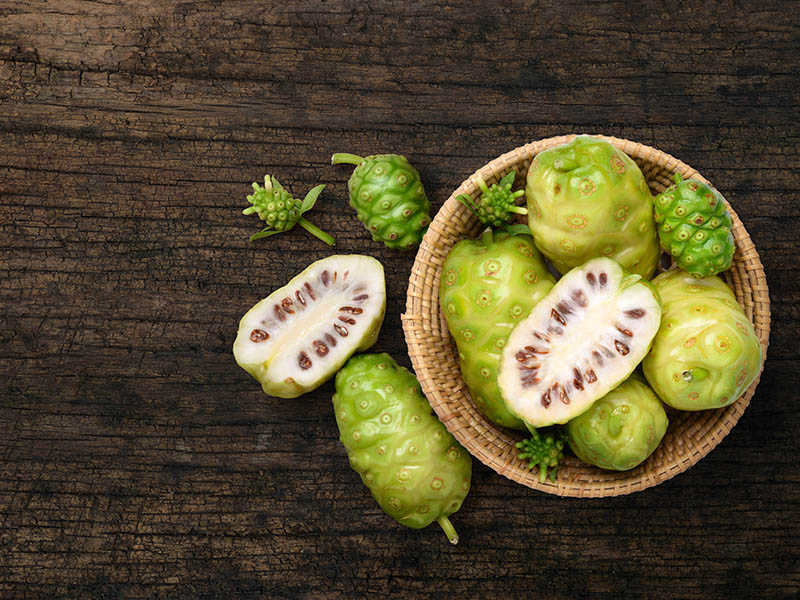
Noni is a tropical fruit of the Morinda citrifolia tree. It is the native fruit of countries in Southeast Asia and Australasia. Many years ago, Polynesian sailors brought it to the Pacific, and now it is popular in tropical regions.
Noni fruit has a rough appearance, about the size of a custard apple. Sometimes, it looks more like a tuber than a fruit. The young fruit is light green, and it will turn to be yellow and have smooth glow skin when it’s ripe.
This fruit has a bitter, pungent taste and a strong, unpleasant fragrance similar to jackfruit. However, its flesh is soft and edible. To eliminate its strong smell and harsh flavor, people combine Noni with other fruits to make a healthy juice.
Noni fruit can support treating health problems like constipation, infections, pain, and arthritis. The juice contains powerful antioxidants and plentiful vitamin C, essential for skin and immune system health.
This video will give you an extra review of Noni’s taste, you might be excited about it!
Amazing Other Fruit Starts With Letter N
I will end the list with fruit you can’t eat the pulp but can use its seeds. Its special appearance and strange name will probably interest you. Take the note and write it down on your list!
20. Nigella
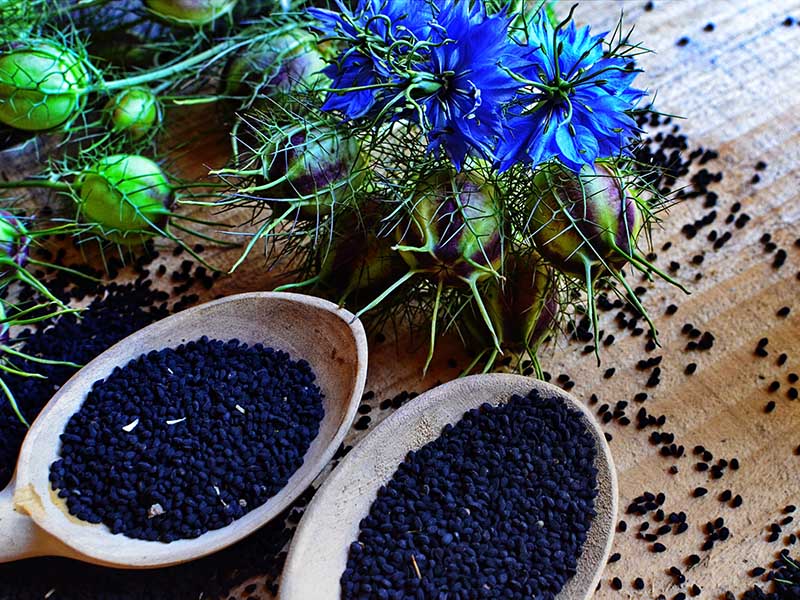
Nigella is a plant native to the Mediterranean region. Nowadays, it has become popular in India, the countries of western and southern Asia, southern Europe, and the Middle East.
Nigella is a type of dry fruit and, of course, doesn’t give flesh. After the harvesting and drying process, a single Nigella fruit brings many small seeds that look like black sesame. It has a faint herbal aroma and creates a mild bitter mixed with a warm taste.
Today, its seed is the traditional spice in some Indian, Middle Eastern, and North African cuisines. Nigella is also a familiar additive added to curries, soups, and stews.
Add More Options To Your Fruit Menu With N-Something Fruits
It seems like a challenge to list fruits with N as a starter because there are some fruits you eat daily, but some you have never heard their names. Through my article, you can easily add some new N-something fruits to your list, right?
Thanks for reading the list from start to end. If you recognize that I miss any fruit name starting with the letter N, don’t forget to comment below so other readers and I can gain more knowledge.
In case you find my list interesting and helpful, remember to share it with your family and friends so more people can solve similar issues like you! See you in the next post!
